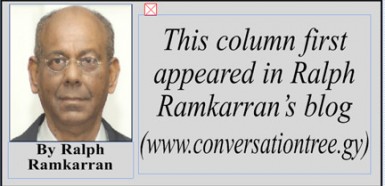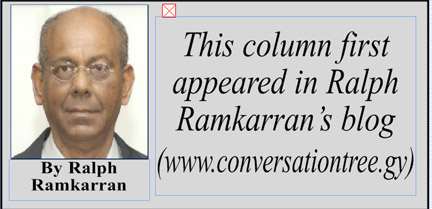When the US Government under President Bush decided in 1990 that it would support free and fair elections in Guyana, it was the Carter Center that was called upon to act as the midwife for a new era of democracy in Guyana. Even though the Hoyte government’s lifeline of international financial and diplomatic support had been partially severed, the government still resisted the reforms demanded by the then opposition. It required the renowned stature and nuanced diplomatic skills of President Carter to negotiate the necessary concessions that would guarantee free and fair elections. President Carter’s name will remain forever associated with Guyana’s democracy.
President Carter and the Carter Center remained engaged with Guyana. It established a permanent office, mounted a second full observer mission for the 2001 elections and conducted a focused observation for the 2006 elections. On both occasions it concluded that the elections were free and fair. Even though the opposition has never accepted the credibility of any elections after 1992, the presence of the Carter Center and other observer missions and their positive conclusions, satisfied the international community. As a result the opposition’s campaigns had little traction outside Guyana. Today we have the ludicrous spectacle of both parties alleging that the 2011 elections were rigged against them.
After the 1992 elections the Carter Center assisted in preparing the National Development Strategy (“NDS”) in six volumes, which was launched by President Jagan on January 6, 1997. It was finalized in 2000 after civil society participation under the leadership of Dr. Kenneth King, a leading official of the PNCR at the time. It was thereafter described on the NDS website as seeking “to define our most urgent priorities and, in every case, clearly lays down concrete policy reforms and actions. It is the product of many of us: Guyanese of all races and diverse professions. To implement it and to realize the dream it embodies would require the collaboration of the entire nation…”
 The collaborative process by civil society opened up the real possibility of a social contract in Guyana based on the NDS, which would forge broad-based agreements as to the policies to move Guyana forward. But the NDS was soon after, quietly, shunted aside and ignored, only to be dusted off from time to time to propagandize about government policies being in line with the nationally acclaimed NDS.
The collaborative process by civil society opened up the real possibility of a social contract in Guyana based on the NDS, which would forge broad-based agreements as to the policies to move Guyana forward. But the NDS was soon after, quietly, shunted aside and ignored, only to be dusted off from time to time to propagandize about government policies being in line with the nationally acclaimed NDS.
In 2010 the late Winston Murray, a PNCR leader and MP, attempted to rescue the NDS from oblivion and re-introduce it into the national discourse. He tabled a motion in the National Assembly for its revision by a Special Select Committee. The Government rejected his argument and amended the motion, which was passed, to refer the NDS to the Ministry of Finance for revision. It was so referred and no one has since heard of it. Having invested a great deal of time and money to get the NDS prepared and accepted, and having seen its abandonment after 2000, may have contributed to President Carter’s negative assessment about Guyana which he expressed in 2004.
In 2004 President Carter visited Guyana for the last time at the invitation of President Jagdeo. He had wide consultations in an effort to resolve the political problems confronting Guyana, as so many have tried to do in the past. On leaving Guyana, he said: “Instead of achieving this crucial goal of inclusive and shared governance, the Guyanese Government remains divided with a winner-take-all concept that continues to polarize many aspects of the nation’s life…There are only spasmodic meetings between political leaders and publicized agreements between those rare and brief sessions have not been fulfilled.”
He recommended substantive governance and electoral reforms and the formation of an independent civil society forum to lead a structured discussion on a vision of governance for Guyana to promote reconciliation in an ethnically divided landscape. President Carter’s views found no favour with the government or the PPP and the Carter Center thereafter disengaged from Guyana.
President Carter would be aware of the deteriorating political realities in Guyana after the 2011 elections. The loss of the majority by the PPP and the formation of a minority government, which has tried to cling to office for three plus years, have led to gridlock, lack of progress and frustration. Instead of forming a coalition government which would have aided national unity and result in much progress, the government has steadfastly resisted any such approach and stubbornly held on to the winner-take-all policy, about which President Carter complained.
With this background, it is not known what President Carter expects the outcome of his visit to be. His engagement with Guyana and the investment in time and money that the Carter Center has made, suggest that his visit could involve a bit more than mere observing of the elections. It could well be that he recognizes its uncertain outcome and that he wishes to make an input in restraining any negative reactions to the results, whatever they are.
President Carter’s presence can also potentially lead to new political realities, whichever party wins. His message of 2004 is still powerfully resonant today. Hopefully, this true friend of Guyana may still find a way, without interfering, about which he is always careful, to reinforce that message.






